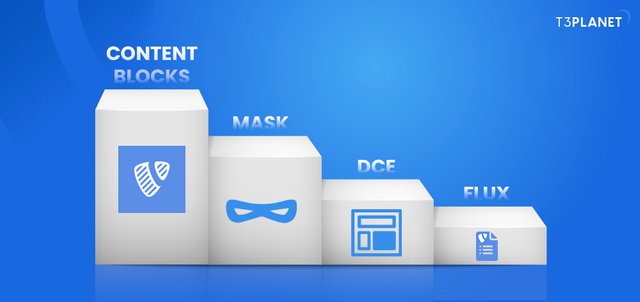When building TYPO3 pages, flexibility and ease of use matter. TYPO3 Fluid TYPO3 templating gives you multiple tools - Content Blocks, Mask, DCE, and Flux. Each comes with its own strengths. The key is choosing the one that matches your editing and development needs.

Content Blocks
This is a newer method introduced in TYPO3 version 12 and planned to become part of the core in version 14. It uses clean files like YAML and TCA to define content.
Content Blocks are fast, modern, and easy to manage in developer workflows. They are stable for future upgrades and work well with automated testing and deployment.
It is a strong choice for professional teams and long term projects but may feel technical if you are used to visual tools.
Mask
Mask is a visual extension that lets you build content without writing code. You can drag and drop fields and layouts.
It’s great for quick work or small teams with limited coding skills. But as your project grows, it can become harder to manage. It also adds a bit more behind the scenes that developers need to watch out for.
DCE
DCE is good when you want to build repeatable content like team members or service items. It gives you a lot of control over how the content is stored and shown.
It works well for structured data but can slow down pages if too many DCE items are loaded together. It’s better for clean, organized content types.
Flux
Flux offers full control. You can build advanced layouts, use nested content, and create flexible templates. It’s very powerful but also complex.
It takes time to learn and is harder to upgrade between TYPO3 versions. Best for experienced developers working on very custom sites.
Choosing the Right Tool
Migration Tips
You can mix methods and switch slowly. TYPO3 lets you keep old content while testing new ones. You don’t need to rebuild everything at once.
Final Advice
Each tool fits different needs. Content Blocks are the best option for future ready TYPO3 projects. Mask and DCE are good for simpler setups. Flux is best for full flexibility but needs more skill.